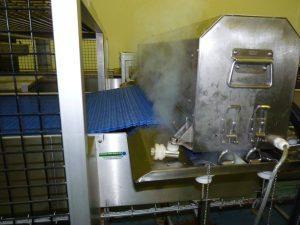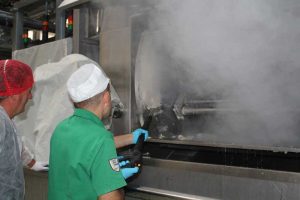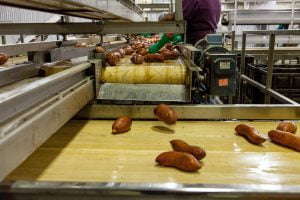In the realm of industrial operations, conveyor belts serve as the backbone of material handling systems. Their efficiency directly impacts productivity, operational costs, and overall workflow. As you delve into the intricacies of conveyor belt systems, you will discover that optimising their performance is not merely a matter of speed; it encompasses various factors, including maintenance, cleanliness, and the technology employed.
The efficiency of a conveyor belt can be measured in terms of its ability to transport materials smoothly and reliably, minimising downtime and maximising throughput. Understanding the nuances of conveyor belt efficiency is essential for anyone involved in manufacturing, logistics, or any sector that relies on these systems. You may find that even minor enhancements can lead to significant improvements in performance.
Among these enhancements, the integration of a brush system stands out as a pivotal factor that can elevate the functionality of conveyor belts. By ensuring that belts remain clean and free from debris, brush systems play a crucial role in maintaining optimal performance levels.
Summary
- Conveyor belt efficiency is crucial for smooth operations in various industries.
- A brush system plays a vital role in maintaining conveyor belt efficiency by removing debris and controlling dust.
- The use of a brush system improves conveyor belt performance by reducing wear and tear, increasing belt life, and minimising downtime.
- There are different types of brush systems available for conveyor belts, including rotary, strip, and air knife brushes.
- Proper installation and regular maintenance of a brush system are essential for maximising its effectiveness and ensuring long-term efficiency of conveyor belts.
The Importance of a Brush System in Conveyor Belt Efficiency
The Importance of Cleanliness
This is where a brush system becomes invaluable; it actively cleans the belt during operation, ensuring that it remains in peak condition. Moreover, the importance of a brush system extends beyond mere cleanliness.
Longevity of the Conveyor Belt
It also contributes to the longevity of the conveyor belt itself. When you consider the costs associated with replacing or repairing a worn-out belt, investing in a brush system becomes a financially sound decision.
Reducing Operational Disruptions
By preventing the build-up of debris and reducing friction, these systems help to extend the life of your conveyor belts, allowing you to allocate resources more effectively and reduce operational disruptions.
How a Brush System Improves Conveyor Belt Performance

The mechanics of how a brush system enhances conveyor belt performance are quite fascinating. When you implement a brush system, you are essentially introducing a proactive approach to maintenance. The brushes work continuously to remove any foreign materials that may accumulate on the belt surface.
This not only keeps the belt clean but also ensures that it operates smoothly without unnecessary resistance. As a result, you will notice an increase in the overall speed and efficiency of material transport. Additionally, a clean conveyor belt reduces the risk of product contamination.
In industries such as food processing or pharmaceuticals, maintaining hygiene standards is paramount. By employing a brush system, you can ensure that your conveyor belts meet stringent cleanliness requirements, thereby safeguarding product integrity and compliance with industry regulations. This dual benefit of enhanced performance and improved hygiene makes brush systems an essential consideration for any operation relying on conveyor belts.
Types of Brush Systems for Conveyor Belts
| Brush System Type | Description | Advantages | Disadvantages |
|---|---|---|---|
| Rotary Brush Cleaners | Uses rotating brushes to remove carryback material from the conveyor belt. | Effective in cleaning large amounts of material, suitable for heavy-duty applications. | Requires regular maintenance, can be expensive to install. |
| Strip Brush Cleaners | Consists of a row of brush strips mounted along the conveyor belt to remove debris. | Flexible and adaptable to different belt widths, easy to install and maintain. | May not be as effective for heavy-duty applications, may require frequent replacement of brush strips. |
| Air Knife Systems | Uses compressed air to blow off carryback material from the conveyor belt. | Can be effective for dry materials, minimal contact with the belt reduces wear and tear. | Less effective for wet or sticky materials, requires a source of compressed air. |
When exploring brush systems for conveyor belts, you will encounter various types designed to cater to specific needs and applications. One common type is the rotary brush system, which utilises rotating brushes to scrub the surface of the belt effectively. This type is particularly useful for heavy-duty applications where stubborn debris is prevalent.
The rotating action ensures thorough cleaning while maintaining minimal wear on the belt itself. Another option is the static brush system, which employs fixed brushes positioned strategically along the conveyor path. These brushes make contact with the belt as it moves, effectively dislodging any accumulated materials without requiring complex mechanisms.
This simplicity often translates into lower maintenance requirements and ease of installation. Depending on your operational needs and the nature of the materials being transported, you may find one type more suitable than another.
Installation and Maintenance of a Brush System
Installing a brush system on your conveyor belt may seem daunting at first, but with proper planning and execution, it can be a straightforward process. You will need to assess your existing conveyor setup to determine the best location for the brushes. Ideally, they should be positioned where debris accumulation is most likely to occur.
Once you have identified these areas, you can proceed with mounting the brushes securely to ensure they maintain consistent contact with the belt. Maintenance of a brush system is equally important to ensure its longevity and effectiveness. Regular inspections should be conducted to check for wear on the brushes themselves and to ensure that they are functioning correctly.
You may also need to adjust their positioning over time as they wear down or as operational conditions change. By staying proactive with maintenance, you can maximise the benefits of your brush system and keep your conveyor belts operating at peak efficiency.
Benefits of Using a Brush System for Conveyor Belts

The advantages of incorporating a brush system into your conveyor belt operations are manifold. Firstly, as previously mentioned, these systems significantly enhance cleanliness by removing debris that could otherwise lead to operational inefficiencies or product contamination. This not only improves performance but also contributes to compliance with health and safety regulations.
Furthermore, using a brush system can lead to substantial cost savings over time. By prolonging the life of your conveyor belts through regular cleaning and maintenance, you reduce the frequency of replacements and repairs. Additionally, improved efficiency means that your operations can run more smoothly, leading to increased productivity and potentially higher profit margins.
In essence, investing in a brush system is not just about immediate gains; it’s about fostering long-term sustainability in your operations.
Case Studies of Improved Efficiency with a Brush System
To illustrate the tangible benefits of implementing a brush system in conveyor belt operations, consider several case studies from various industries. In one instance, a food processing plant faced challenges with product contamination due to flour residue accumulating on their conveyor belts. After installing a rotary brush system, they reported a significant reduction in contamination incidents and an increase in overall production efficiency by 15%.
This not only improved their product quality but also enhanced their reputation within the industry. Another case study involved a manufacturing facility that dealt with metal shavings on their conveyor belts during production processes. The installation of static brush systems allowed them to maintain cleaner belts without interrupting operations for manual cleaning.
As a result, they experienced reduced downtime and an increase in throughput by 20%. These examples underscore how tailored brush systems can lead to remarkable improvements in efficiency across diverse sectors.
Conclusion and Future Developments in Conveyor Belt Efficiency
As you reflect on the importance of conveyor belt efficiency and the role that brush systems play within this framework, it becomes clear that ongoing innovation will continue to shape this field. The future may see advancements in brush technology that enhance cleaning capabilities while reducing energy consumption or wear on both brushes and belts. Additionally, integrating smart technology into brush systems could allow for real-time monitoring and adjustments based on operational conditions.
In conclusion, investing in a brush system for your conveyor belts is not merely an enhancement; it is an essential strategy for ensuring optimal performance and longevity. As industries evolve and demands increase, embracing such innovations will be crucial for maintaining competitive advantage and operational excellence. By prioritising efficiency through effective cleaning solutions like brush systems, you position yourself for success in an ever-changing industrial landscape.
FAQs
What is a conveyor belt brush?
A conveyor belt brush is a device used to clean conveyor belts by removing debris and material build-up. It typically consists of bristles or filaments that come into contact with the belt to dislodge and remove unwanted materials.
How does a conveyor belt brush work?
A conveyor belt brush works by being in constant contact with the conveyor belt as it moves. The bristles or filaments of the brush come into contact with the belt, dislodging and removing debris and material build-up as the belt moves along the conveyor system.
What are the benefits of using a conveyor belt brush?
Using a conveyor belt brush can help to improve the cleanliness and efficiency of a conveyor system. It can reduce material build-up, prevent belt damage, and improve overall conveyor performance. Additionally, it can help to maintain a safe working environment by reducing the risk of material spillage and contamination.
Where are conveyor belt brushes commonly used?
Conveyor belt brushes are commonly used in industries such as food processing, packaging, manufacturing, and material handling. They are used in conveyor systems where cleanliness, hygiene, and efficient material handling are important.
How do you maintain a conveyor belt brush?
To maintain a conveyor belt brush, regular inspection and cleaning are important. The brush should be checked for wear and tear, and any damaged bristles or filaments should be replaced. Additionally, the brush should be cleaned regularly to remove any accumulated debris and material build-up.









